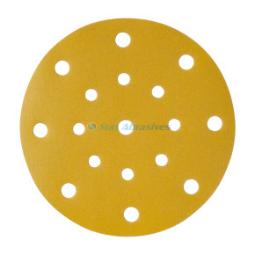Sand Paper: An Essential Tool for Surface Preparation
Time:
2025-05-26 09:48
Source:
Sand paper is a fundamental tool in various industries and DIY projects, known for its abrasive properties that are crucial for surface preparation.
Sand paper consists of an abrasive material, usually grains of minerals like aluminum oxide or silicon carbide, adhered to a backing material. The type of abrasive used determines the coarseness and effectiveness of the sand paper. For example, aluminum oxide sand paper is commonly used for general-purpose sanding, especially on wood and metal surfaces. It provides a good balance between abrasiveness and durability. Silicon carbide sandpaper tends to have good sharpness, and fine-grained silicon carbide sandpaper is more used for fine polishing.

Sandpaper is based on paper, ranging from ordinary C-wt 115gsm kraft paper to 275gsm F-wt heavy kraft paper, and latex paper ranging from A-wt 70gsm to 130gsm D-wt paper.
There are also abrasive films based on film, and abrasive cloth based on cloth. Different bases are matched with different abrasives to adapt to different sanding tasks.
One of the main applications of sand paper is in woodworking. Before applying a finish such as paint or varnish, wood surfaces need to be smoothed. Sand paper is used to remove rough edges, splinters, and imperfections in the wood. Starting with a coarser grit (lower number), the woodworker can quickly remove large amounts of material. As the surface gets closer to the desired smoothness, a finer grit (higher number) is used to achieve a polished look. For example, when making a wooden table, sand paper might be used in several stages, from an initial 80-grit to a final 220-grit.
In the metalworking industry, sand paper is used for deburring, which is the process of removing small, sharp edges or protrusions from metal parts. This is important not only for the aesthetics of the part but also for safety reasons. Additionally, sand paper can be used to prepare metal surfaces for painting or welding. It helps to create a clean and rough surface that allows the paint or weld to adhere better.
Related News
undefined



